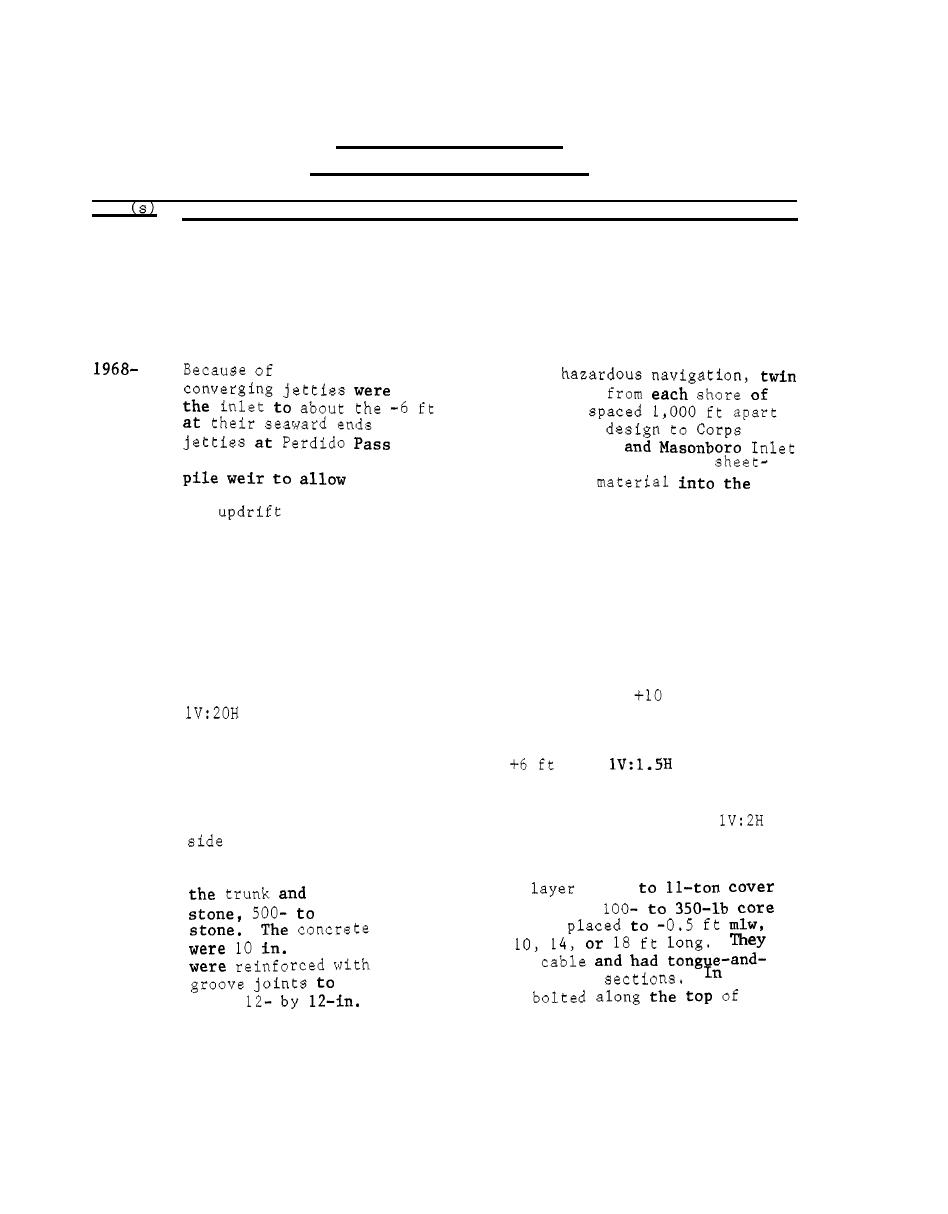
Table 31
East Pass Channel Jetties
East Pass Channel, Florida, SAM
Date
Construction and Rehabilitation History
1928-
In April 1923 the present East Pass Channel, connecting
1951
Choctowhatchee Bay with the Gulf of Mexico, came into existence as a
result of a severe storm and high tides. In 1930 Congress autho-
rized a Federal project to provide a 6- by 100-ft channel through
the inlet. In 1951, the project was authorized to provide a 12- by
180-ft channel (present project dimensions).
continued channel shoaling and
1969
constructed, extending
mlw contour and
3 . Similar in
(built during this time)
(completed in 1966) the west jetty incorporated a concrete
movement of littoral drift
deposition basin. This feature potentially minimizes the effect of
jetty on the beach topography and provides a source of
the
material for beach renourishment on the downdrift side, thus main-
taining the net movement of littoral drift material. The 4,850-ft-
long west jetty as constructed consisted of 1,200 ft of sand dike at
the landward end, followed by 900 ft of rubble mound, followed by
1,000 ft of sheet pile, and ending with 1,750 ft of rubble mound (of
which the seaward end consisted of 105- and 100-ft transition and
head sections, respectively). The 2,270-ft-long east jetty con-
sisted of 1,270 ft of sand dike and 1,000 ft of rubble mound.
Design cross sections (Figure 54) were the same for both jetties.
The sand dike sections had a 50-Et crest width at
ft mlw with
side slopes and were built up with dredged material from the
deposition basin. The jetty rubble-mound sections were placed on a
2.5-ft-thick bed of 5- to 100-lb blanket material. The jetty trunk
sections had a 10-ft crest width at
mlw,
side slopes,
one layer of 3- to 6-ton cover stone, one layer of 500- to 1,000-lb
underlayer stone, and 5- to 100-lb core stone. The 100-ft-long
jetty head sections had a 14-ft crest width at +13 ft mlw,
slopes, two layers of 11- to 15-ton cover stone, one layer of
1 to 1.5 ton underlayer stone, and 100- to 350-lb core stone. The
105-ft-long transition section's geometry varied linearly between
Of 4-
head sections, with one
3,000-lb underlayer stone, and
sheet-pile sections,
thick, 2.5 ft wide, and
prestressed steel
addi-
provide interlocking between
timber wales were
tion,
(Continued)
(Sheet 1 of 4
)
95



 Previous Page
Previous Page
